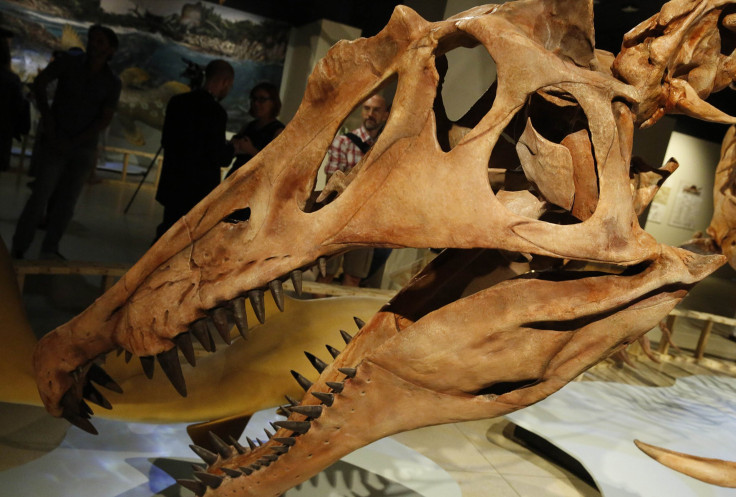Giant Spinosaurus Likely Was First Semiaquatic Dinosaur; Bigger Than Tyrannosaurus Rex

Fossils discovered in the Moroccan Sahara and a partial skull and other remains that have been in museum collections for as long as a century have led researchers to conclude the Spinosaurus was the first truly semiaquatic dinosaur. The Cretaceous-era predator was 9 feet longer than the largest Tyrannosaurus rex specimen.
The scientists -- paleontologists Nizar Ibrahim and Paul Sereno from the University of Chicago; Cristiano Dal Sasso and Simone Maganuco from the Natural History Museum in Milan, Italy, and Samir Zouhri from the Université Hassan II Casablanca in Morocco -- published their findings last week in the journal Science.
The Spinosaurus is believed the largest known predatory dinosaur and is the subject of an exhibition at the National Geographic Museum that opened Friday. It also will be featured in a National Geographic/Nova special to air Nov. 5 at 9 p.m.
"Working on this animal was like studying an alien from outer space; it's unlike any other dinosaur I have ever seen," Ibrahim said in a press release.
The specimen differed from earlier members if the spinsaurid family that lived on land. Its nostrils were higher up on its skull so it could breathe when its head was partially submerged, and it had neurovascular openings in its snout similar to those seen in modern-day crocodiles and alligators to help them sense movement.
The Spinosaurus had a long neck and trunk, powerful forelimbs with blade-like claws, short hind legs for paddling, loosely connected tail bones to help with swimming and huge dorsal spines that would have been visible even when the animal was in the water.
The first evidence of the Spinosaurus was found by German paleontologist Ernst Freiherr Stromer von Reichenbach more than a century ago but his fossils were destroyed during the Allied bombing of Munich in 1944. His notes, sketches and photos, however, survived.
The latest fossils were found in the Moroccan desert along the Kem Kem cliffs, an area that once was part of a large river system that stretched to Egypt.
© Copyright IBTimes 2024. All rights reserved.





















